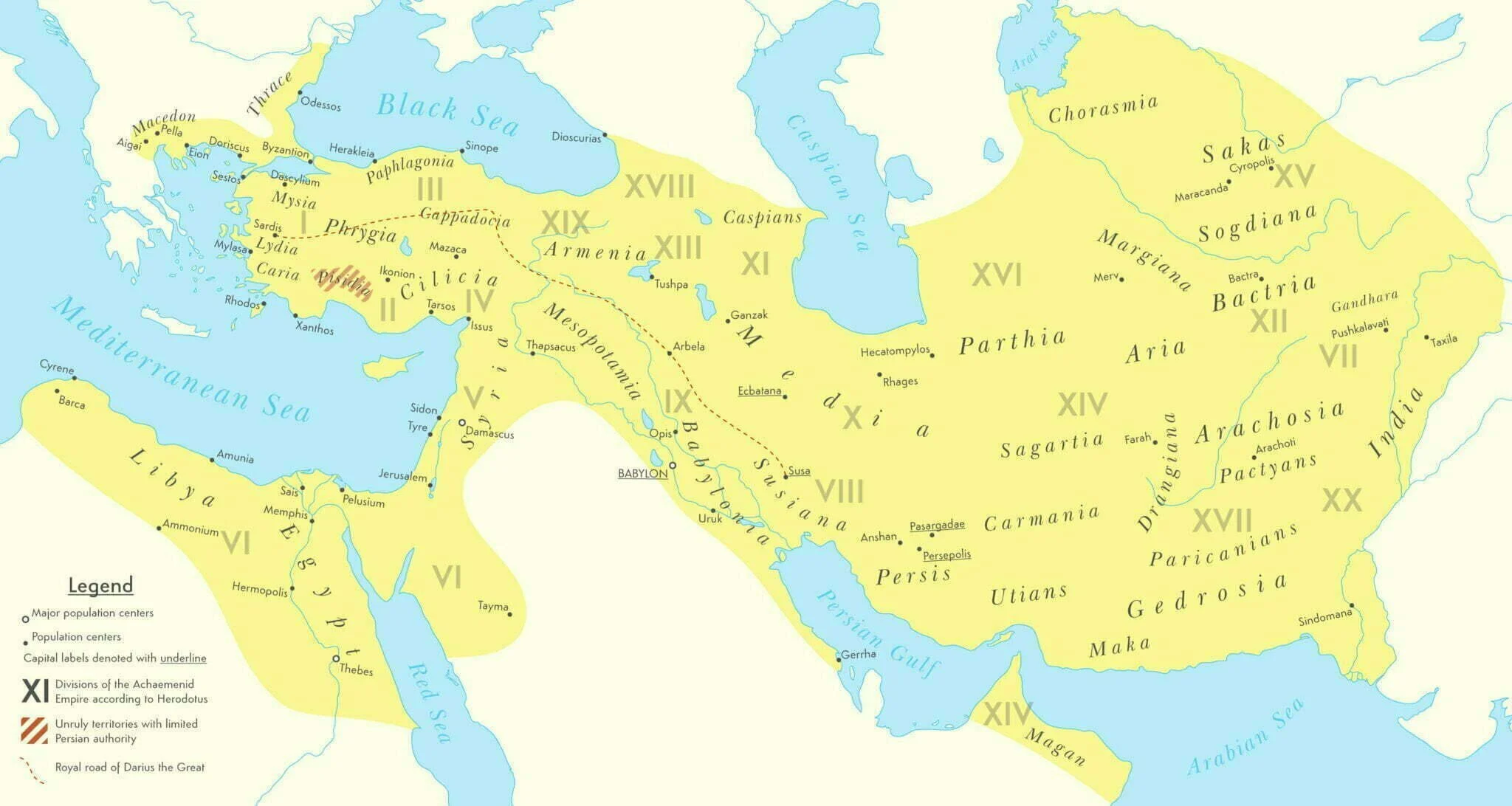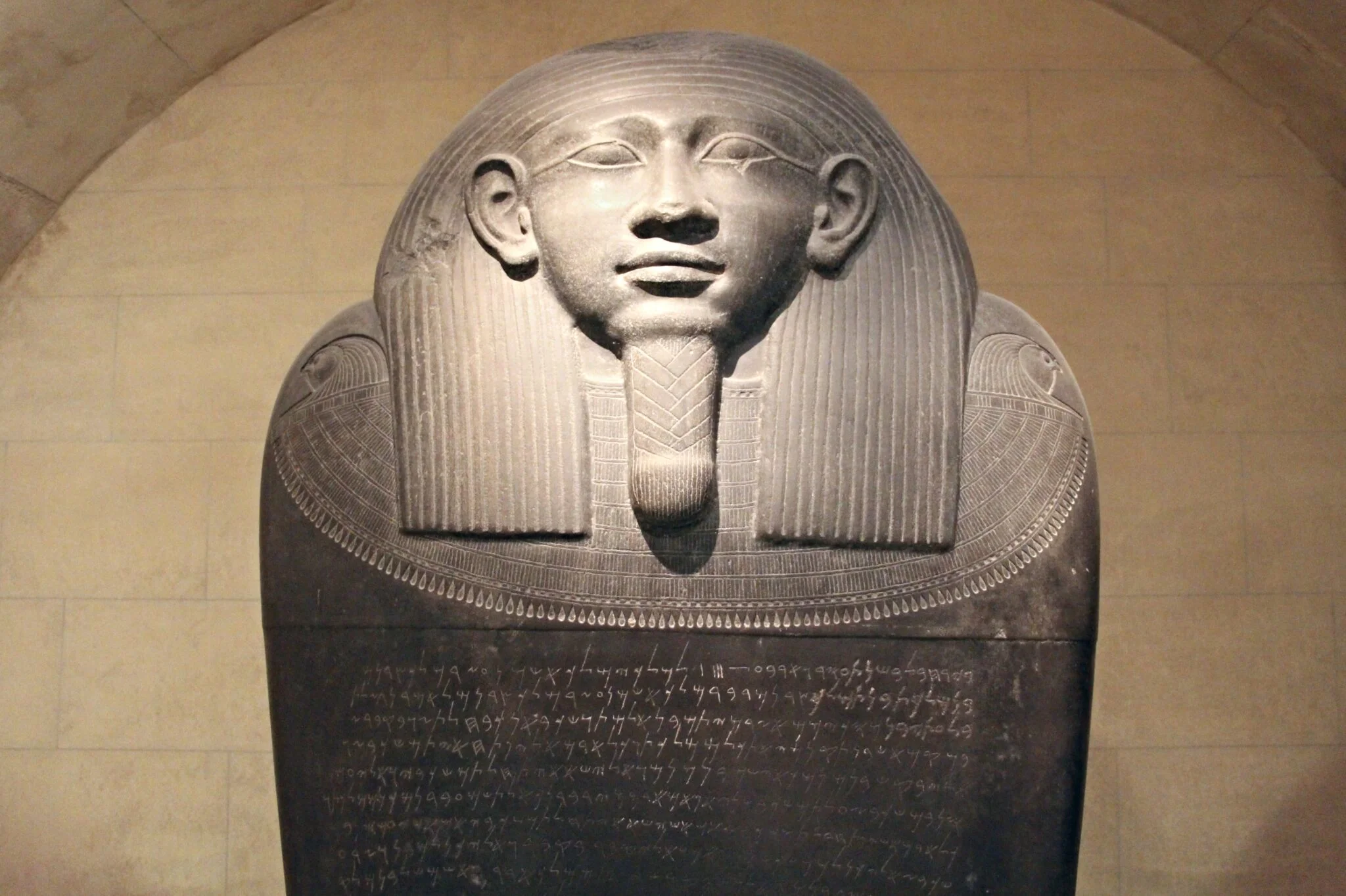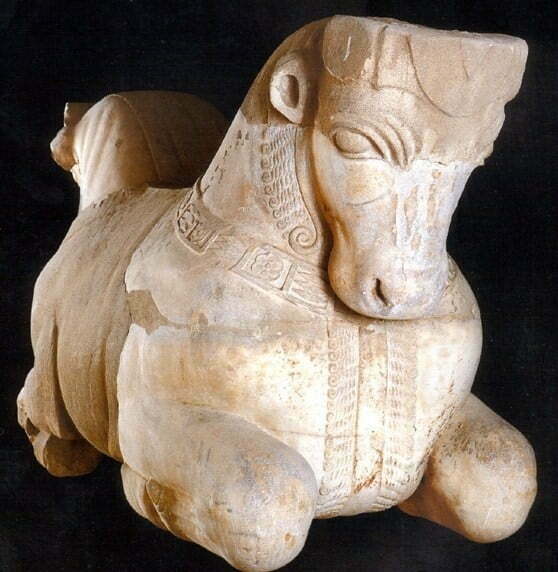The Persian Period 2
The Persian period in the southern Levant is a time of both continuity and profound change. A time of strong cultural influences from both the east and the west. It is considered both a biblical era, but also the beginning of the classical age. During the Persian period, the vast majority of the Ancient Near East came under the hegemony of the Achaemenid monarchs who founded the Persian Empire, the largest empire to that date, which in its heyday stretched from the Balkans through Asia Minor to eastern Asia (modern Afghanistan), and further south from Libya, through Egypt, the southern Levant, and Mesopotamia as far as the Hindus valley (Fig. 1).

The Achaemenids, named after their mythological ancestor, Achaemenes, were an Iranian speaking group who had managed to establish an independent kingdom with its capitol Anshan in the territory of Elam in the 8th century BCE. As Elam grew weaker due to its constant conflicts with Assyria, the Achaemenids became increasingly stronger and more independent. Sometime during the mid-6th century BCE, Cyrus the Great (ca. 600-530 BCE), the founding father of the Persian empire, had managed to conquer the kingdom of Media. He then continued west conquering Asia Minor before turning east to battle the Neo-Babylonians in the battle of Opis. In Oct. 539 BCE, the forces of Cyrus marched into Babylon and secured the vast territory of the Neo-Babylonian empire. It is unclear whether Cyrus conquered the southern Levant before or after Babylon, however it appears Egypt had managed to reestablish its dominance over the region for a short period of time beforehand.
In order to secure the loyalty of the various peoples that were now under the hegemony of the newly founded Persian empire, Cyrus decided to take a far more benign approach to that of the former Neo-Babylonian empire. He established several key cities throughout the empire as official Achaemenid capitals, which preserved the status of their socio-economic elites, and had also issued an edict that allowed peoples who were deported by the Neo-Babylonians to return to their homes, restore their temples, and practice their religions freely. This proclamation, known as the Cyrus Cylinder (Fig. 2) which doesn’t mention Jerusalem, is echoed in the Hebrew bible several times (Ezr. 1: 1-4; 6: 1-12; 2 Chr. 36: 22-23) referring specifically to the Jews in Babylon who were permitted to return to Judah, known in the Persian period as Yehud, and rebuild their temple. This novel approach awarded Cyrus much popularity across the empire, and the Hebrew bible even refers to him as a messiah (Isa. 45: 1).

The entire southern Levant became part of the Abar Nahara satrapy, which in the time of Cyrus consisted of all the land to the west of the Euphrates, including Syria, Phoenicia, and Judah. After the death of Cyrus on the battlefield in 530 BCE, his son and heir Cambyses II (530-522 BCE) took the throne and continued the expansion of the Persian empire, turning his focus to the only major power in the region, Egypt. The southern Levantine coast played a key role in the conquest of Egypt and according to written sources the base of operations against Egypt was set at Akko. In the past the ancient harbor at Akko, which is still partly visible today, was thought to have been constructed during the Persian period, however recent studies indicate that this harbor was first constructed in the Hellenistic period, and that the old harbor – or anchorage, was situated in a lagoon at the feet of Tel Akko which was silted up and blocked during the Persian period. In preparation of the invasion, Cambyses erected the Persian navy using the fleets of the city-states of Phoenicia and Asia Minor. According to Herodotus (III.19.3) the Phoenicians offered their assistance freely and willingly not only against Egypt, but also later when Persia turned to conquer Greece. After Egypt was conquered in 525 BCE the southern Levantine coast became the most important part of the satrapy, and the three most prominent Phoenician city-states; Tyre, Sidon, and Arwad, were awarded dominance over the coast from Gaza in the south to the gulf of Iskenderun in the north. It appears Gaza was under direct Persian rule and a series of forts, which also served as administrative centers, were founded in the southern part of the Levant and in the Sinai Peninsula in sites such as Tel Haror, Tel Sera, Tell el-Far`ah (south), and Tel Qatif (Ruqeish), in order to assist the Persian army in case of an Egyptian rebellion.

Although it is not well attested in the material culture it seems Jews were also not exempt from Achaemenid, or rather Zoroastrian, influences. There’s much debate on the question of how much biblical scholars borrowed from the Zoroastrian belief, and how much of the Hebrew bible was composed during the Persian period. Nevertheless, it is widely accepted that during the 6th-4th centuries BCE, Judaism as it is conceived today first emerged. During this period, Jerusalem became the center of the Jewish world, however Jews also thrived in the diaspora, in Babylon and also in Elephantine – Egypt, where another Jewish temple was constructed. During that time we are also informed of a rift between the returning Jews of Jerusalem and the Samaritan population who left Jerusalem and founded a new temple on Mount Gerizim.


In 522 BCE, Cambyses died on the battlefield, and Darius I (522-486 BCE) seized the throne. After establishing his control over the empire, Darius enacts several dramatic reforms. The empire was reorganized into twenty satrapies instead of seven. A new sophisticated road and post system was established, connecting the farthest regions of the empire. Darius also introduced coinage and established a monetary system of imperial coins. And finally, he institutionalized Zoroastrianism as the official religion of the empire and the royal family, and Ahura Mazda as its chief deity. Darius was also the first monarch to attempt expanding the Persian empire into Europe, a conflict known as the Greco-Persian Wars.
In 522 BCE, Cambyses died on the battlefield, and Darius I (522-486 BCE) seized the throne. After establishing his control over the empire, Darius enacts several dramatic reforms. The empire was reorganized into twenty satrapies instead of seven. A new sophisticated road and post system was established, connecting the farthest regions of the empire. Darius also introduced coinage and established a monetary system of imperial coins. And finally, he institutionalized Zoroastrianism as the official religion of the empire and the royal family, and Ahura Mazda as its chief deity. Darius was also the first monarch to attempt expanding the Persian empire into Europe, a conflict known as the Greco-Persian Wars.
In 522 BCE, Cambyses died on the battlefield, and Darius I (522-486 BCE) seized the throne. After establishing his control over the empire, Darius enacts several dramatic reforms. The empire was reorganized into twenty satrapies instead of seven. A new sophisticated road and post system was established, connecting the farthest regions of the empire. Darius also introduced coinage and established a monetary system of imperial coins. And finally, he institutionalized Zoroastrianism as the official religion of the empire and the royal family, and Ahura Mazda as its chief deity. Darius was also the first monarch to attempt expanding the Persian empire into Europe, a conflict known as the Greco-Persian Wars.
